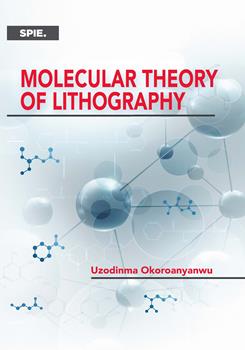|
At the molecular level, the purpose of lithography is to create a difference or a contrast in a physical and/or chemical property between the exposed and unexposed area of the information registration medium, called resist, such that the net interaction between the molecules of either of these parts of the resist and the development medium is either attractive so as to be miscible with it or repulsive so as to be immiscible with it. The overall result is the preferential removal of one part of the resist relative to the other during development. This differential solubility of the exposed and unexposed regions of the resist in the developer solvent thus accounts for the contrast between the two regions.
Agents for creating this contrast include electromagnetic radiation (as in optical, x-ray, and EUV lithography), charged particle (as in electron beam and ion beam lithography), mechanical force (as in imprint lithography), interfacial forces (as in self-assembly lithography and fine art lithography). Combinations of these agents are also used to effect patterning, as in the combination of mechanical and chemical agents in guided/directed self-assembly that use larger topographical or chemical patterns to guide the self-assembly of much smaller patterns so as to ensure that the self-assembled patterns have predetermined locations and small domain size as opposed to the random locations and large domain sizes in unguided self-assembly. The ultimate effect of the above agents is to engender molecular interactions, including van der Waals, electrostatic, hydrophobic, hydrogen bonding, acid-base, and steric interactions - to mention but the most significant ones - that act in concert during the aqueous or solvent development of the resist to determine which part of the resist will be dissolved or not, and in so doing give rise to the contrast between the exposed and unexposed areas of the resist.
|


